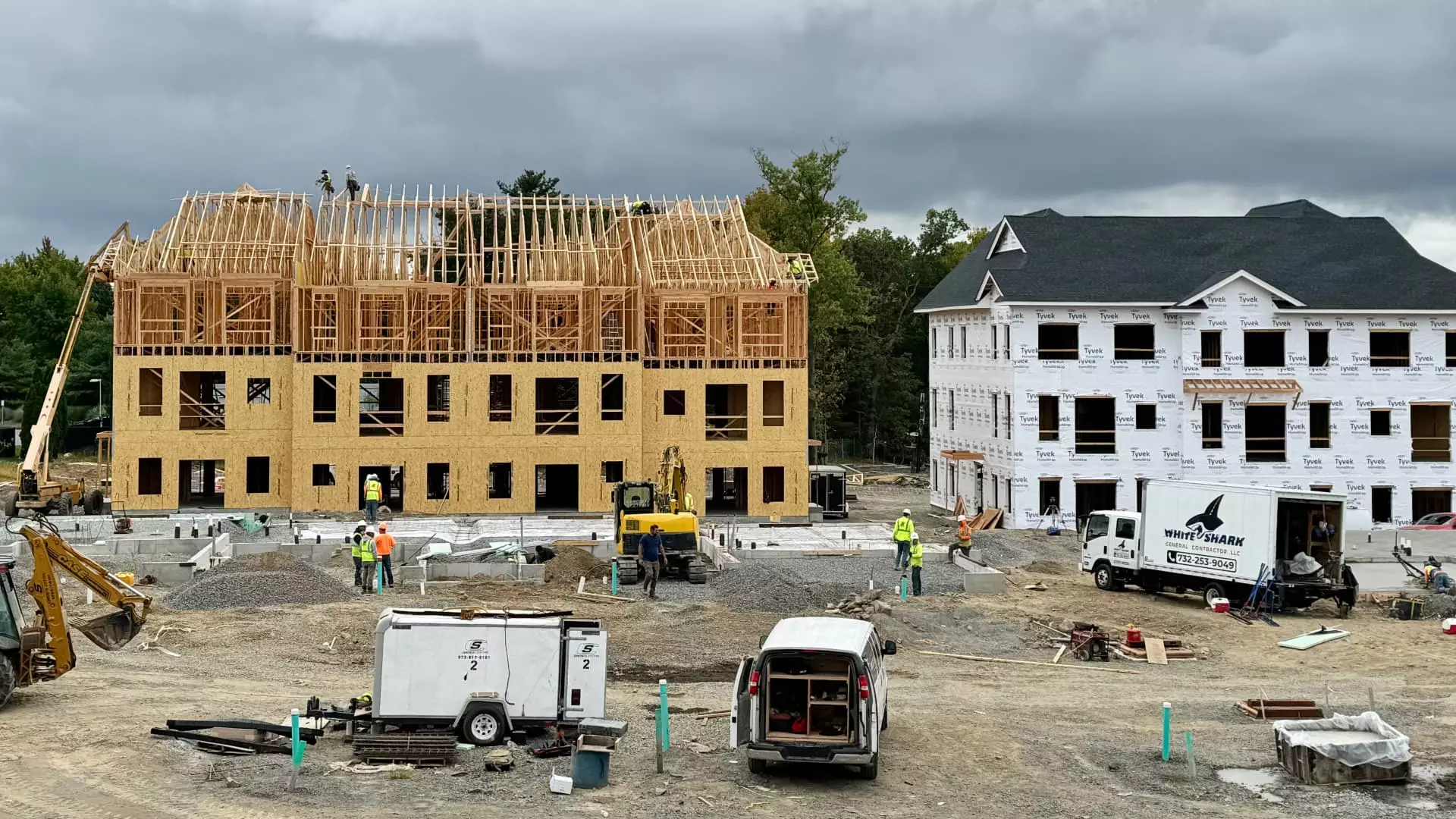In a nation where the American dream is symbolized by homeownership, recent policy changes have upended this aspiration. The implementation of tariffs by the Trump administration—notably 25% on goods from Canada and Mexico and a staggering 20% on Chinese imports—threatens not only the materials that go into constructing homes but the very foundations of the homebuilding industry itself. As a consequence, builders are staring down an uphill battle, with estimated price increases ranging from $7,500 to $10,000 per new home. This isn’t just a number; it potentially pushes homeownership further out of reach for many Americans.
The statistical implications of these tariffs are staggering. According to the National Association of Home Builders (NAHB), each $1,000 increase in median home prices eliminates around 106,000 prospective buyers from the market. Given that lumber prices, affected by tariffs, could increase significantly—upwards of $4,900 per home on average—the ramifications threaten millions who seek stability and investment in real estate.
The Lumber Quandary: A Delicate Balance
Lumber is particularly impacted by these tariffs, with nearly a third of the lumber utilized in U.S. construction sourced from Canada. A perfect storm of soaring prices, coupled with reduced supply, leaves domestic builders scrambling. The recent surge in prices for Western Spruce-Pine-Fir—a critical material for homebuilding—by 13% following the re-implementation of tariffs exemplifies this volatility.
While the administration touts initiatives to stimulate domestic lumber production, like streamlining regulatory processes, this is a complex challenge fraught with delays. Paul Jannke, from Forest Economic Advisors, emphasizes the realities of scaling domestic production; such efforts won’t yield immediate results. It can take years to establish new sawmills and even longer to find qualified labor in rural areas where these mills are intended to operate. The reality is that a shortsighted decision to impose these tariffs may lead to long-term inefficiencies.
While certain factions of the homebuilding community are cautiously optimistic about the prospect of enhanced domestic lumber production, there lies a dark undercurrent. Executives like Ken Gear, CEO of Leading Builders of America, expressed support for the administration’s efforts, recognizing the significance of a stable lumber supply. But even within this cautious optimism exists a palpable concern: any additional tariffs could further exacerbate construction costs. Builders have an array of complex decisions ahead—should they absorb costs, raise prices, or use lower-quality materials? Regardless of the route taken, consumers are bound to bear the brunt.
This leads to the unfortunate likelihood that these tariffs could stall new housing projects and worsen the inventory crisis increasingly plaguing the real estate market. With dwindling supply and robust buyer demand, prices rise, further strangling affordability for average citizens.
The ramifications of these tariffs extend beyond new constructions and reach into the existing housing market. As newly constructed homes become prohibitively expensive, buyers may shift their focus back to existing homes, driving prices up across the board. This shift is detrimental, as it creates a bids-war scenario for fewer available homes, isolating first-time buyers and lower-income families to the sidelines.
Moreover, the tariffs may dissuade homeowners from taking on renovation projects that rely on imported materials affected by high tariffs. This hesitance could stall home upgrades across the nation and prevent homeowners from adapting their living spaces to fit evolving needs, ultimately limiting personal investment in home equity.
Short-term Gains vs. Long-term Consequences
Amid these tumultuous developments, there’s a silver lining articulated by supporters of the administration: a reduction in mortgage interest rates. While the promise of lower rates provides a momentary level of relief for potential buyers, it does not erase the burdens imposed by inflated construction costs. There’s a tension at play, as nominal interest rate decreases cannot compensate for the significant rises in fundamental construction costs.
Those who believe that the administration’s policies are beneficial for American consumers must grapple with the tangible impact of tariffs on the housing market. The consequences of these policies demonstrate how short-term manufacturing gains can give way to long-term economic challenges—especially in a sector as crucial as housing.
The labyrinthine effects of these tariff policies underscore the need for a more nuanced and balanced approach to trade and the housing market. The numbers are daunting, and the effect on the American dream of homeownership may linger far longer than anticipated.

